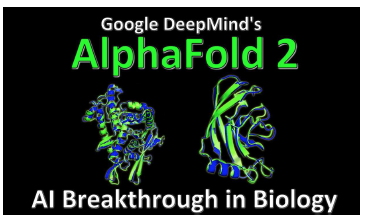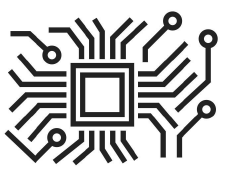Google DeepMind’s Protein Folding Algorithms Solve Structures Faster Than Ever
Trend Watch: From Predicting COVID Patient Outcomes to Protein Structures, AI
 An AI network developed by Google AI offshoot DeepMind has made a gargantuan leap in solving one of biology’s grandest challenges — determining a protein’s 3D shape from its amino-acid sequence. DeepMind’s program, called AlphaFold, outperformed around 100 other teams in a biennial protein-structure prediction challenge called CASP, short for critical assessment of structure prediction.
An AI network developed by Google AI offshoot DeepMind has made a gargantuan leap in solving one of biology’s grandest challenges — determining a protein’s 3D shape from its amino-acid sequence. DeepMind’s program, called AlphaFold, outperformed around 100 other teams in a biennial protein-structure prediction challenge called CASP, short for critical assessment of structure prediction.
The ability to accurately predict protein structures from their amino-acid sequence would be a huge boon to life sciences and medicine. It would vastly accelerate efforts to understand the building blocks of cells and enable quicker and more advanced drug discovery.
Demis Hassabis, DeepMind’s co-founder and chief executive, reported that the company plans to make AlphaFold useful so other scientists can employ it. The company previously published enough details about the first version of AlphaFold for other scientists to replicate the approach. It can take AlphaFold days to come up with a predicted structure, which includes estimates on the reliability of different regions of the protein. Mr. Hassabis says he sees drug discovery and protein design as potential applications.
Deep Learning Checks If All Cancer Cells are Removed After Surgery
Researchers developed a deep learning extended depth-of-field microscope (DeepDOF), a tool that optimizes both image collection and image post-processing. The team used 1,200 images from a database of histological slides to train the algorithm.
With this new microscope, researchers expect that they can advance current processes related to cancer cell removal.
“Current methods to prepare tissue for margin status evaluation during surgery have not changed significantly since first introduced more than 100 years ago," says study co-author Ann Gillenwater, M.D., a professor of head and neck surgery at MD Anderson.
The deep-learning microscope can rapidly image large tissue sections, allowing surgeons to inspect the margins of tumors after their removal. A microscope powered by deep-learning technology can quickly image tissue sections, potentially during surgery, to help surgeons determine whether they’ve removed all cancer cells, according to a study published in Proceedings of the National Academy of Sciences (PNAS).
DeepDOF uses a standard optical microscope in combination with an inexpensive optical phase mask costing less than $10 to image whole pieces of tissue and deliver depths-of-field as much as five times greater than today’s state-of-the-art microscopes. The phase mask is placed over the microscope’s objective to module the light coming into the microscope. DeepDOF can capture and process images in as little as two minutes.
New Tool Could Advance Precision Medicine for Incurable Diseases
 Scientists refer to diseases as “undruggable" when their targets lie on a protein molecule that folds inward, or in a way that shields the active site from would-be treatments.
Scientists refer to diseases as “undruggable" when their targets lie on a protein molecule that folds inward, or in a way that shields the active site from would-be treatments.
Addressing this problem of “undruggable" proteins, a team of Scripps Research scientists has invented a tool that bypasses the awkward proteins completely, and instead modifies elements involved in their construction and regulation. This new tool, called Chem-CLIP-Fragment Mapping, focuses on RNA, molecules that read genes and help build proteins, among other duties.
RNAs have not been viewed as drug targets until recently, due to challenges that include a short-lived existence, changeable shape, and limited array of building blocks. The new RNA drug-discovery tool, described in the Proceedings of the National Academy of Sciences, addresses these and other challenges to enable both the rapid discovery and optimization of RNA-targeting compounds, says chemist Matthew Disney, Ph.D., of Scripps Research.
“It allows us to tackle very hard molecular recognition problems to enable us to make lead medicines across multiple indications," Dr. Disney says. “This opens great potential to redefine what’s truly undruggable."
The system adapts a recent advance in protein-targeting drug discovery, which uses weakly binding, drug-like chemical fragments to reveal promising templates. Here, the fragments are “functionalized," or appended with tags and light-sensitive modules, allowing them to be seen and identified, a protein-targeting strategy originally developed by Christopher Parker, Ph.D., a postdoctoral fellow in the lab of Scripps Research biochemist Benjamin Cravatt, Ph.D.(PV)
















